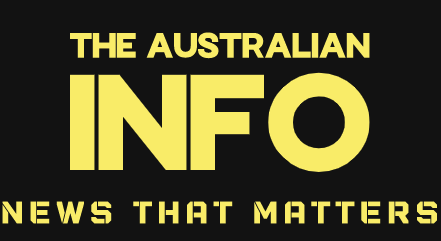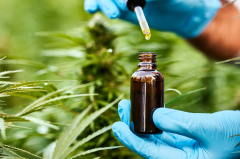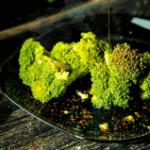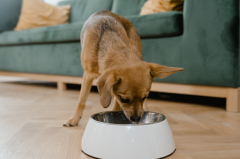Since cultivation of cannabis was legalised in Australia in 2016 for medical purposes (and only with a license), there’s been a surging interest in the product. And not just from the public. Worth an estimated AU$141 million in 2023, and US$21 billion globally, the legal cannabis market is booming. Forecasts by Grand View Research predict the Australian market will soar at a compound annual growth rate of 27.8 per cent between 2024 to 2030.
How does “medicinal” cannabis differ from the maligned, recreational marijuana, pot and weed associated with getting high and addiction? What proof is there of its effectiveness? And how is the “medicalised” version accessed for health purposes within the laws of today?
Medical versus recreational cannabis Dr Orit Holtzman, a functional medicine practitioner, director and co-founder of Leura Wellness, president of the Australian and New Zealand College of Cannabinoid Practitioners and adjunct fellow at Western Sydney University, describes medical cannabis simply as the cannabis plant used as a medication. According to the Therapeutic Goods Administration (TGA), cannabis used medically can range from untreated raw and dried cannabis and hashish (cannabis resin) to various pharmaceutical cannabis preparations, as well as synthetically lab-produced cannabinoids.
In reality, within most states of Australia, medical use of the plant is highly controlled and restricted to pharmaceutical products accessed through a prescription. These come in a wide variety of forms including oral formulations (in oil, tinctures, capsules or wafers), inhalations via medical-grade vaporisers and topical creams and pessaries, Holtzman explains. They’re also sold as chewables, lozenges and as the flower. Smoking cannabis is not endorsed because of its negative impact on lung health.
Currently, the oil is the most common way the plant is used medically. Cannabis oil products are manufactured from the green plant matter of the cannabis plant and formulated to contain various ratios of the cannabinoids CBD (cannabidiol) or THC (tetrahydrocannabinol) in combination or alone. Some products consist solely of CBD or THC as highly purified ingredients; others contain CBD and/or THC with a “full spectrum” of cannabis plant constituents including other cannabinoids, the TGA≈explains.Cannabis oil should be differentiated from hemp seed oil (made from the seeds), which is classified as a food and doesn’t contain either THC or CBD.
Medical cannabis and the law
In Australia, the TGA and Office of Drug Control (ODC) regulate medicinal cannabis products. Under current laws, it can only be obtained from a pharmacy or doctor via a prescription from a registered medical or nurse practitioner authorised to prescribe the medicine. This applies to those prescribing and dispensing medicinal cannabis products online.
Purchasing medicinal cannabis independently of these pathways is illegal in Australia. This includes buying it online and importing it yourself, with or without a prescription. The TGA strongly urges consumers to avoid accessing unapproved therapeutic goods from unknown websites, social media or other digital platforms. Such products are untested by the TGA and may contain toxic substances or not live up to their claims.
Laws around consumer access differ between states of Australia and across countries. In Canada, Germany, Malta, Thailand and a few other countries, for example, it’s legal to use cannabis for recreational or medical reasons. In the ACT, due to laws enacted in 2020, residents aged over 18 are permitted to grow up to two plants (or four per household) and possess up to 50g of dried or 150g of fresh cannabis for personal use.
Approved and unapproved products To date, the TGA, whose role it is to approve prescription medicines, has approved two medicinal cannabis products as prescription medicines on the Australian Register of Therapeutic Goods (ARTG). Nabiximols (Sativex) contains THC and CBD and is approved to treat spasticity in people with multiple sclerosis (MS). Cannabidiol (Epidyolex) is a CBD-only oil preparation approved for use in specific forms of epilepsy in children.
All other cannabis products are unapproved therapeutic goods, unevaluated for efficacy, but allowed for use through the Special Access Scheme (SAS), the Authorised Prescriber Scheme or in a clinical trial via a health practitioner, under specific conditions and on a case-by-case basis. Doctors can either apply for approval to the SAS for individual patients or become an authorised prescriber, Dr Holtzman explains. “To become an authorised prescriber, you do need to do some training and be approved by an ethics committee and then by the TGA,” she says.
Whether approved or not, (apart from Epidyolex used for the treatment of Dravet syndrome), medical cannabis isn’t subsidised under the Pharmaceutical Benefits Scheme.
Cannabinoids – THC versus CBD More than 560 different natural compounds have been identified in Cannabis sativa, according to a 2023 article in Horticulture Research. The most studied and best known are the cannabinoids, rich in the plant and thought to be responsible for any therapeutic effects: more than 130 different kinds (within 11 subclasses) have been identified. These include THC (tetrahydrocannabinol) and CBD (cannabidiol), which many of us have heard of, as well as less known and studied cannabinoids like CBC (cannabichromene) and CBN (cannabinol).
THC is the ingredient responsible for feeling high and hallucinations. Research shows it also has analgesic, antiepileptic, antispastic, antitumour and antiemetic (anti-vomiting) effects. CBD, the second most studied compound, has been found to be an antiinflammatory, antidepressant and anti-epilepsy, and has activity against glaucoma, according to a journal article by Chinese researchers in Horticulture Research .
THC is the ingredient responsible for feeling high and hallucinations. Research shows it also has analgesic, antiepileptic, antispastic, antitumour and antiemetic (anti-vomiting) effects. CBD, the second most studied compound, has been found to be an antiinflammatory, antidepressant and anti-epilepsy, and has activity against glaucoma, according to a journal article by Chinese researchers in Horticulture Research .
Unapproved medicinal cannabis products are categorised into broad groups based on their proportion of CBD or THC compared to overall cannabinoids. Prepared products are either CBDor THC-dominant or a balanced mix of both, vary in strength and include low- and high-dose forms. TGA requirements mean the amount of CBD or THC present must be listed on the label. What product form, composition, strength and dosage prescribed is determined by the medical practitioner considering the patients’ symptoms and needs.
TGA data shows 49 per cent of medicinal cannabis products in Australia





